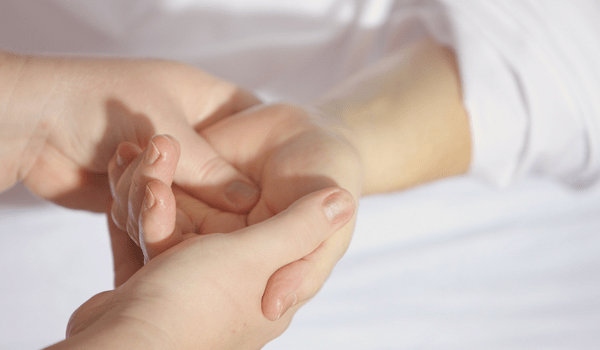
Lichen planus is a relatively common disease that affects areas of the skin and frequently (but not always) the inside of the mouth, resulting in distinctive skin or oral lesions. This disease often appears on the wrist, and it can also affect the scalp, genitals, and nails. It’s important to note that lichen planus itself is not an infectious disease, so it cannot be passed from one person to another by any means. It is also not a type of cancer, although the presence of oral lichen planus may increase the risk of developing oral cancer.
What does lichen planus look like?
Lichen planus symptoms may vary based on where it appears on the body. For instance, when the disease appears on the skin, it often causes bumps that are shiny, firm, and reddish-purple. Sometimes the bumps have tiny white lines running through them, which are called Wickham’s striae. Just a few or many bumps can appear, depending on the person. The most commonly affected places are the wrists, lower back, and ankles, but they can appear anywhere on the skin, including the genitals, scalp, nails, and mouth.
What is oral lichen planus?
Oral lichen planus is most commonly found on the insides of the cheeks, but it also can form on the tongue, lips, and gums. Lichen planus in the mouth usually has a different appearance than lichen planus on the outer parts of the skin. The oral form of this disease may include lacy patches of tiny white dots and lines, redness and swelling, painful sores, and peeling of the gums. About half of people who are diagnosed with lichen planus experience oral lichen planus.
Where else can lichen planus develop?
When lichen planus appears on the nails of the hands or feet, it typically only affects several nails, but this is not always the case. Lichen planus of the nails can cause ridges or grooves, splitting or thinning, and even a temporary or permanent loss of nails.
Although this is less common, lichen planus can also appear on the scalp. In this area it can cause redness and irritation, small bumps, thinning hair or patches of scarring hair loss. Lichen planus of the scalp, called lichen planopilaris, can lead to other conditions such as alopecia.
What causes lichen planus?
The cause of lichen planus remains unclear. A common theory is that lichen planus is an autoimmune disease; however, more research is needed. This disease can also occasionally be associated with factors such as medication, genetics, and other health conditions, like Hepatitis C.
Anyone can get lichen planus, but it most commonly occurs in middle-aged adults. Oral lichen planus is also more common in women than in men. A dermatologist usually diagnoses lichen planus by looking at a person’s skin, nails, and mouth. Often, a skin biopsy is performed to confirm the diagnosis. In some cases, blood tests are also ordered to exclude other diseases. You should seek medical attention if you develop a bumpy rash with no apparent cause, as it could be lichen planus or another condition.
Lichen planus cases can vary by affected areas as well as level of extremity, which is why a board-certified dermatologist should diagnose the condition and determine which type of lichen planus treatment option is appropriate for each patient. The disease cannot be cured; however, it can be treated and managed with specific types of pills, creams, and/or light therapy. In general, lichen planus is not a harmful or fatal disease. It sometimes resolves on its own, but it’s important to remember that the severity and duration of the disease varies from patient to patient. Regardless of how mild it may seem, it is important to see a doctor if you develop lichen planus anywhere on your body, since it can lead to other complications if left untreated.
Vujevich Dermatology Associates offers medical, surgical, and cosmetic dermatology from some of the most highly trained physicians and clinicians in the greater Pittsburgh area. You can reach our team at 412-429-2570 or visit our contact page to see all of our locations in Mt. Lebanon, Washington, and Pleasant Hills. You can also follow us on Facebook to see what’s new in the world of dermatology.
